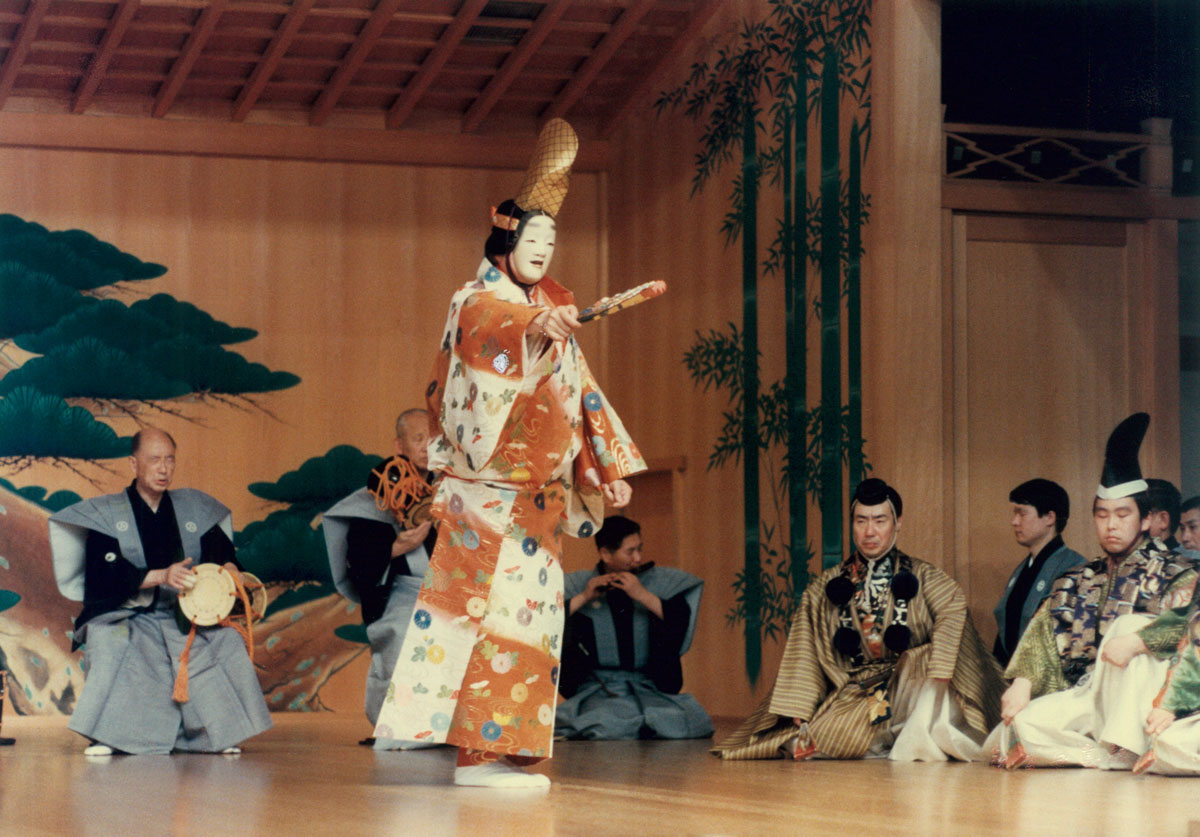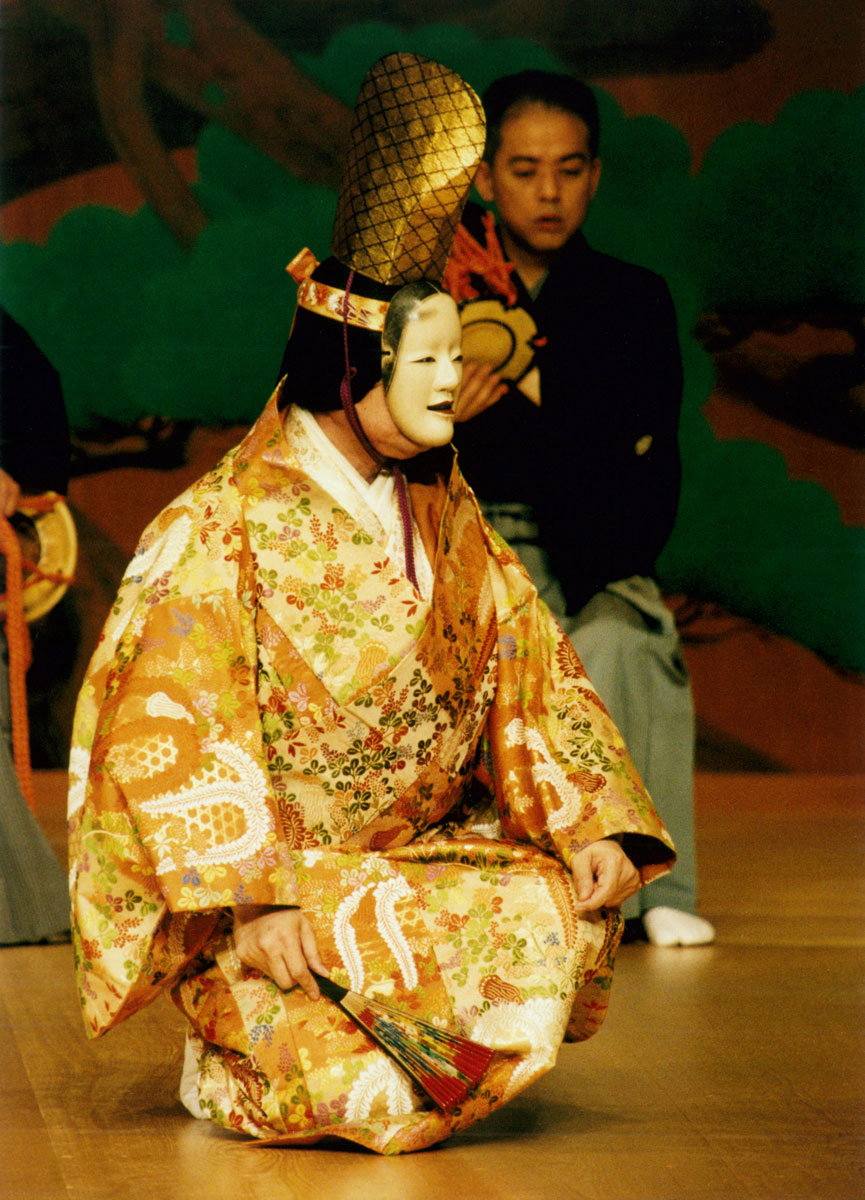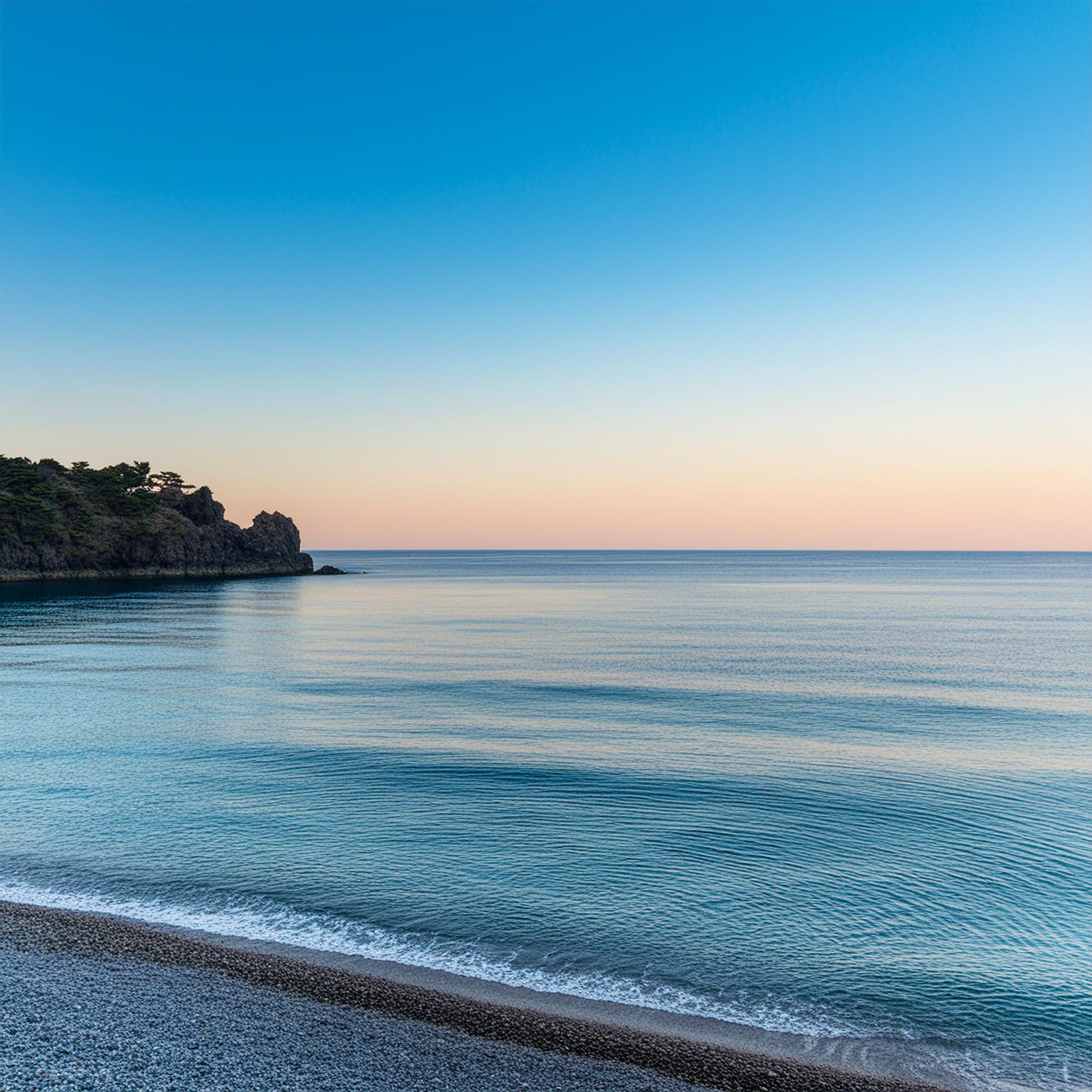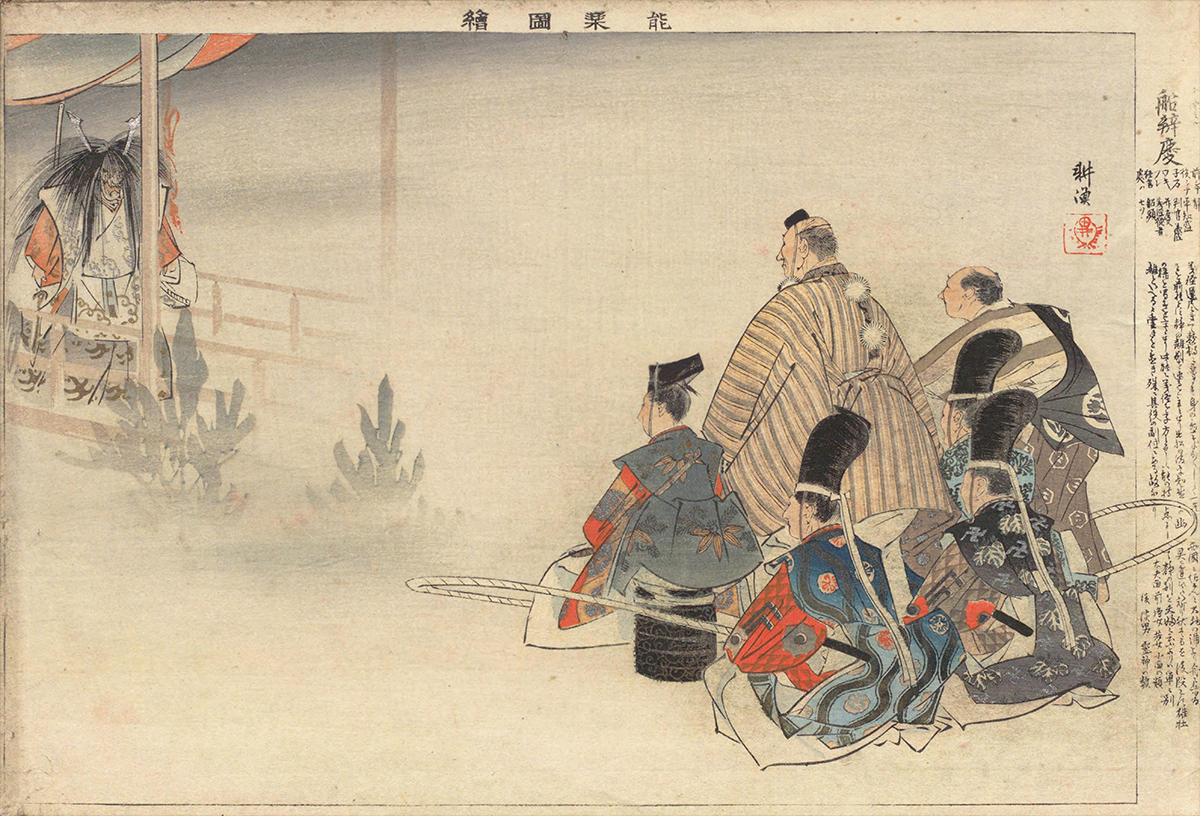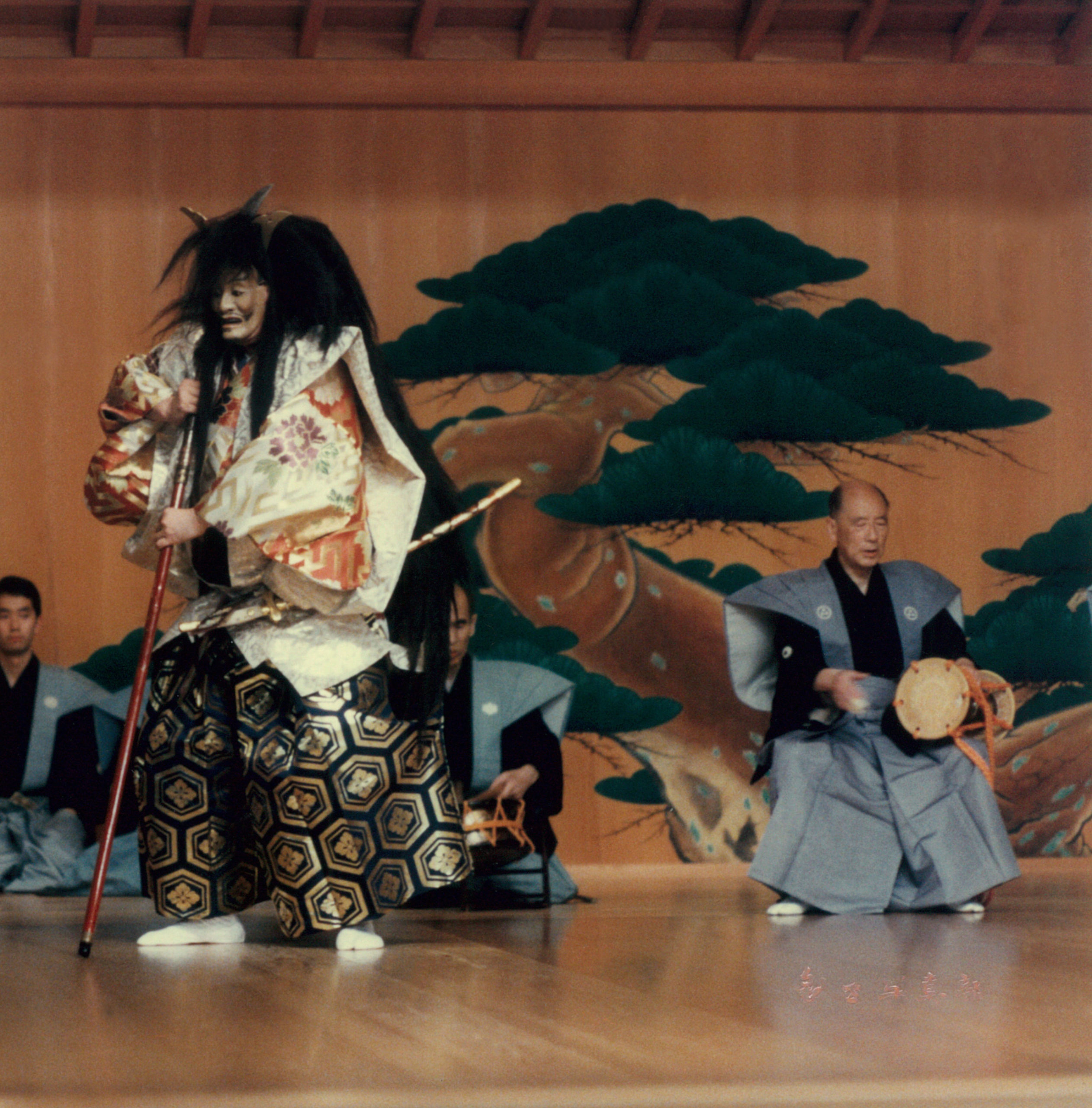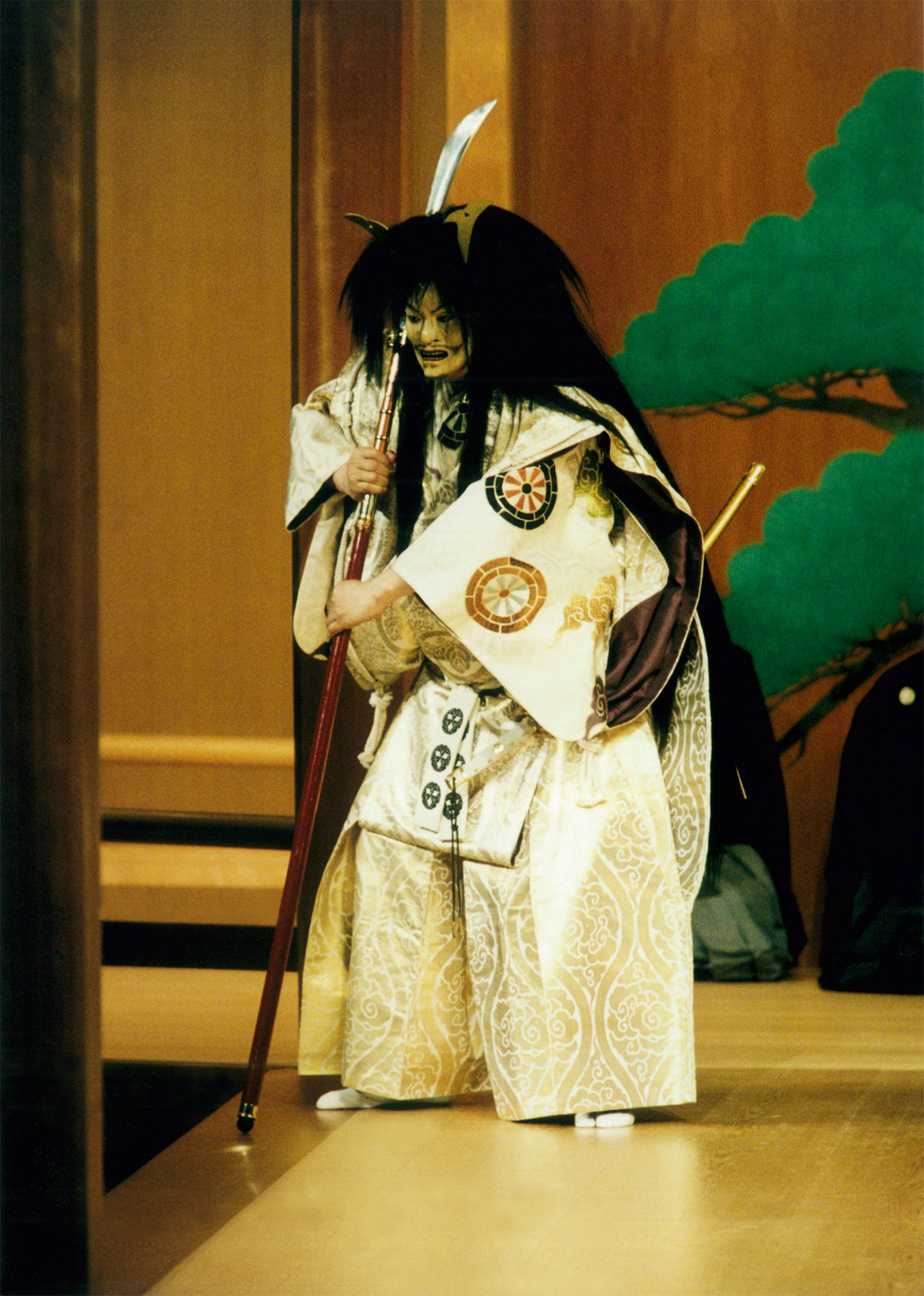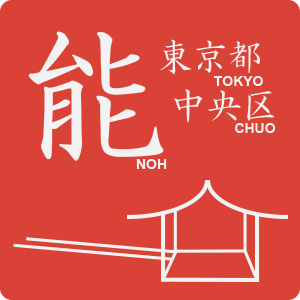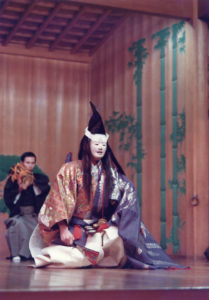 Noh “Tsunemasa” performed by Hiroshi Nakamura Noh “Tsunemasa” performed by Hiroshi Nakamura |
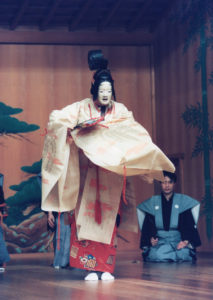 Noh “Kakitsubata” (Water Lily) performed by Hiroshi Nakamura Noh “Kakitsubata” (Water Lily) performed by Hiroshi Nakamura |
The opportunity to hold this festival is related:
- people in Chuo-ku have had august habits to enjoy and learn traditional domestic culture and entertainment on daily bases for a long time
- many masterpieces in other genres have been created in this city: Ukiyoe by Hokusai, Hiroshige, Kuniyoshi, performing arts like Kabuki and Bunraku, and the music etc.
- people in this city has cherished their historical culture and taken pride in it
- people has been independently taking part in this event, comprehended the purpose well and operated eagerly for over thirty years
- the Noh master, Hiroshi Nakamura has taught singing and dancing of Noh, and enjoyed playing with the amateurs in this city since 1982.
When you travel in Japan for a week, we can recommend to stay this city to enjoy watching traditional entertainment: Noh or Kabuki, variety of gourmet and shopping places in Ginza, and the original gourmet culture around Tsukiji Fish Market. In Nihonbashi and all over Chuo-ku, you can explore the famous sights in masterpieces of Ukiyoe. We appreciate you would not hesitate to ask us to stay in comfort and excitement in this city.
“Chuo” (中央) means “center” in Japanese. This ward is located at the center and middle of Tokyo’s 23 wards. Ku (区) means the specific 23 wards of Tokyo. This city was named Chuo-ku 60 years ago. Tokyo has been the center of Japan since the beginning of 17 century when it started to be called Edo, This Chuo City was the absolute center in culture as well next to the district of the Edo castle in the era. The residents could maintain their life in culture without any wars during the era. Recently the most popular districts from overseas guests has been Ginza, Tsukiji, Nihonbashi and Tokyo Station and so on.
Stunning views of Chuo Ward in the season of Cherry Blossoms
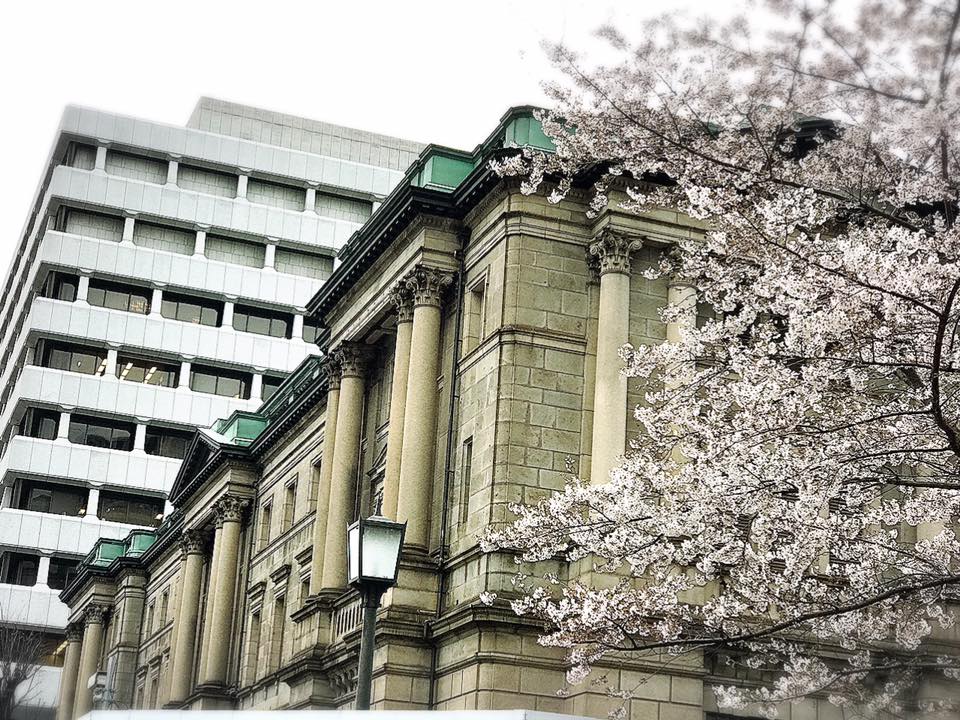 Bank of Japan Bank of Japan |
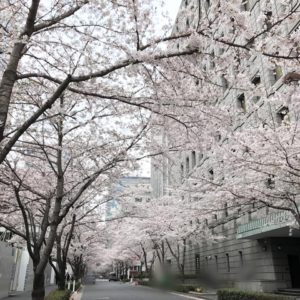 Edo Cherry-Blossoms Avenue on Bank of Japan Edo Cherry-Blossoms Avenue on Bank of Japan |
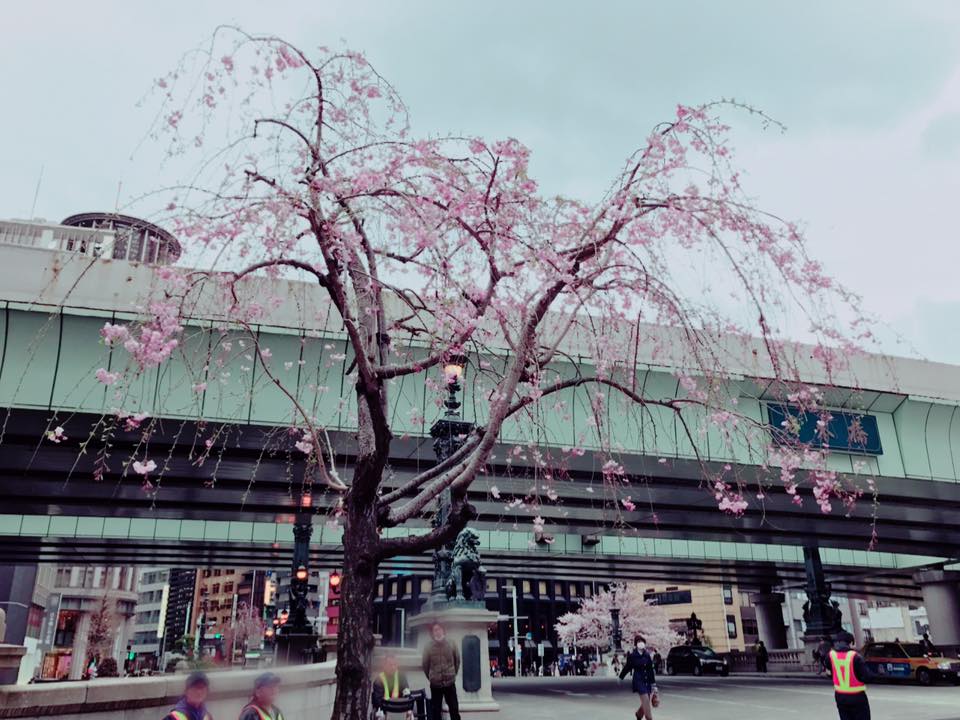 Nihonbashi Bridge, traffic origin of Japan Nihonbashi Bridge, traffic origin of Japan |

